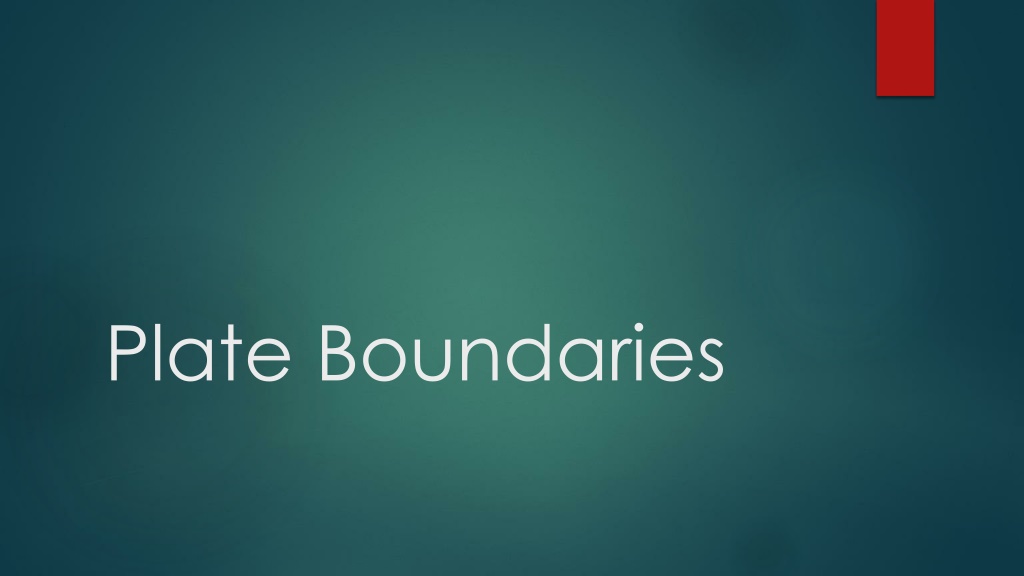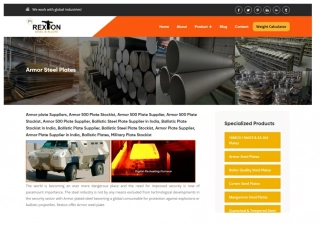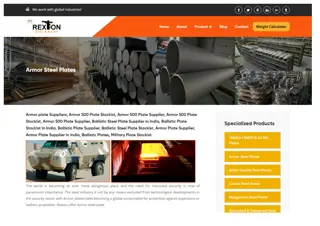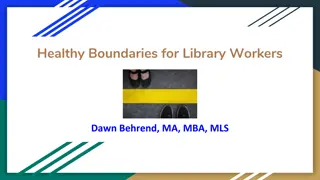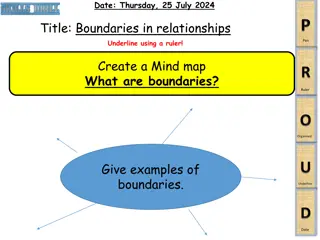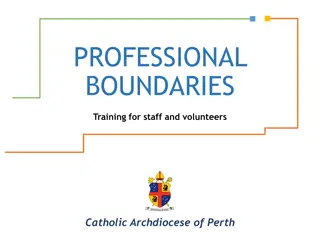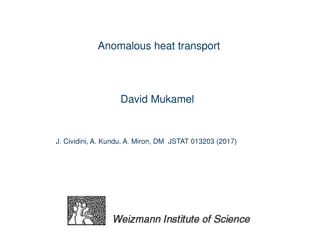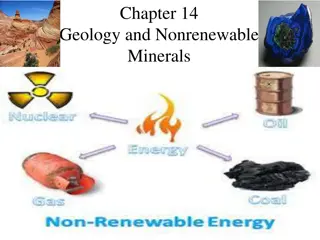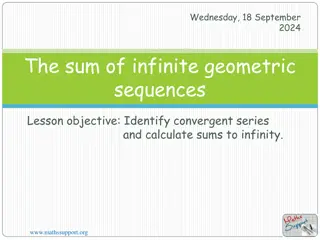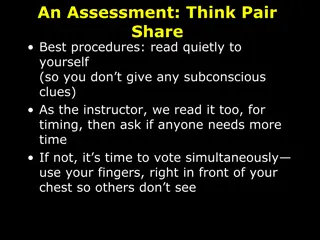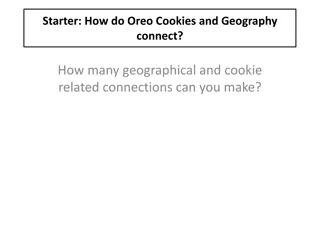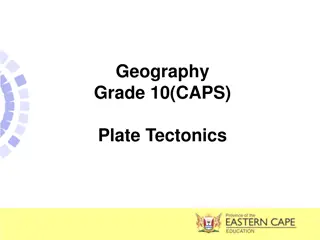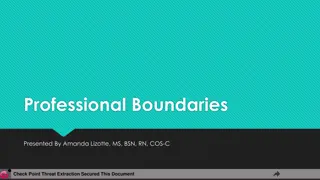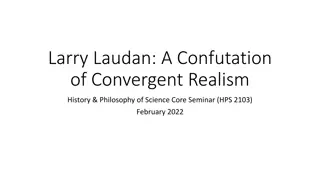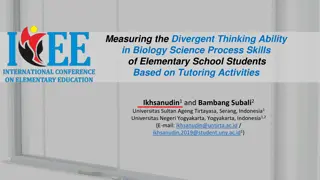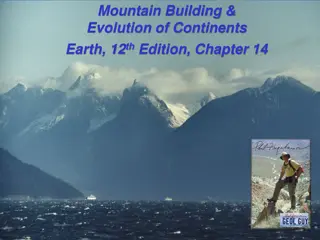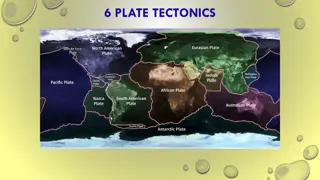Exploring Plate Boundaries: Convergent, Divergent, and Transform Faulting
Delve into the world of plate boundaries by understanding convergent, divergent, and transform faulting. Discover various examples worldwide, describing their physical locations, major tectonic plates involved, resulting landforms, lithosphere types, and associated catastrophic events. Learn about the movement of plates, average rates, proposed mechanisms, and the differences between convergent and divergent boundaries. Explore the technologies used to detect plate movements on land and in the ocean.
Download Presentation

Please find below an Image/Link to download the presentation.
The content on the website is provided AS IS for your information and personal use only. It may not be sold, licensed, or shared on other websites without obtaining consent from the author. Download presentation by click this link. If you encounter any issues during the download, it is possible that the publisher has removed the file from their server.
E N D
Presentation Transcript
Your Task! Using your electronic device, you are to research the two types of plate boundaries (convergent and divergent) along with transform faulting. Give a brief description of convergent plate boundaries. Find 5 examples, world wide of convergent plate boundaries. For each give the physical location (i.e. Washington, D.C.) and the beginning and ending geographical locations (i.e. 38.8951 N, 77.0367 W) If the location has a touristic identification make sure you provide it. What major tectonic plate is near? What type of land form resulted from this boundary? (i.e. mountain, canyon, etc..) What type of lithosphere makes up the boundary? (continental; granite or oceanic; basalt) Does catastrophic events occur? (i.e. earthquakes, volcanoes, etc..)
Your Task! Using your electronic device, you are to research the two types of plate boundaries (convergent and divergent) along with transform faulting. Give a brief description of divergent plate boundaries. Find 5 examples, world wide of divergent plate boundaries. For each give the physical location (i.e. Washington, D.C.) and the beginning and ending geographical locations (i.e. 38.8951 N, 77.0367 W) If the location has a touristic identification make sure you provide it. What major tectonic plate is near? What type of land form resulted from this boundary? (i.e. mountain, canyon, etc..) What type of lithosphere makes up the boundary? (continental; granite or oceanic; basalt) Does catastrophic events occur? (i.e. earthquakes, volcanoes, etc..)
Your Task! Using your electronic device, you are to research the two types of plate boundaries (convergent and divergent) along with transform faulting. Give a brief description of transformation faulting. Find 5 examples, world wide of transform faulting. For each give the physical location (i.e. Washington, D.C.) and the beginning and ending geographical locations (i.e. 38.8951 N, 77.0367 W) If the location has a touristic identification make sure you provide it. What major tectonic plate is near? What type of land form resulted from this boundary? (i.e. mountain, canyon, etc..) What type of lithosphere makes up the boundary? (continental; granite or oceanic; basalt) Does catastrophic events occur? (i.e. earthquakes, volcanoes, etc..)
Conclusion Based on your research and knowledge of plate boundaries. Why do you think the plates move? What is the average rate of the plate boundaries movement? What processes take place at each type of boundary? In what direction do the plates move at each boundary? What mechanisms have been proposed to account for plate motion? Under what conditions will a convergent boundary form a mountain range? An island arc system? What is the difference between a divergent plate boundary and a convergent plate boundary? What current technologies have helped to detect plate movements, both on land and in the ocean?
